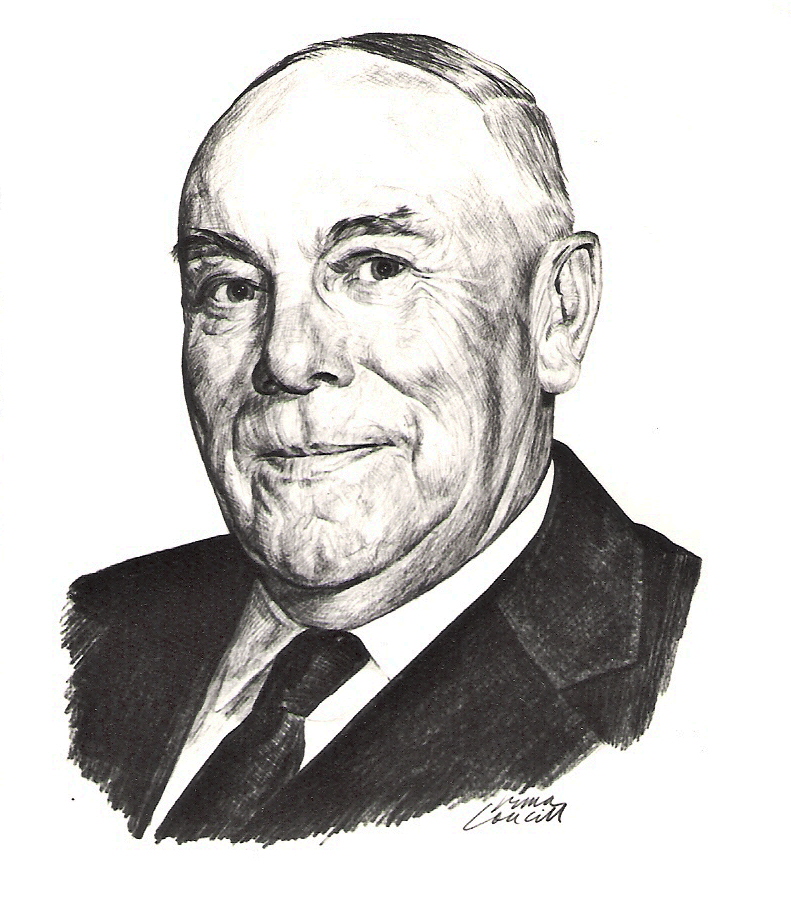Archibald Major McMullen

Nickname: Archie
Birth Date: July 29, 1906
Birth Place: Gilbert Plains, Manitoba
Death Date: June 13, 1983
Year Inducted: 1974
His quest for perfection as an Arctic airman, despite adversity, helped make the term 'bush pilot' synonymous with resourcefulness and has been of outstanding benefit to Canadian aviation
Great Western Airways
Archibald Major (Archie) McMullen was born on July 29, 1906, in Gilbert Plains, Manitoba. He moved to Nanton, Alberta, as a child and was educated in Alberta. He worked as a mechanic in Calgary, Alberta, until 1927, when he joined World War I 'ace', Freddie McCall as a mechanic. This move resulted in the formation of Great Western Airways at Calgary in June 1928, involving himself, McCall, Jock Palmer and two other aviators. They started operations with one Stinson Detroiter.
Becoming a Pilot
The firm acquired the distributorship for de Havilland aircraft, and several DH Moths were shipped from Toronto, assembled in Calgary and sold. The company then formed a flying school, and after obtaining an Air Engineer's Licence, McMullen earned both his Private and Commercial Pilot's Licences by March of 1929. During that summer, he barnstormed extensively throughout western Canada.
Commercial Airways
In September 1929, he joined 'Wop' May as a pilot for a newly formed company, Commercial Airways, at Edmonton, Alberta, which had a government contract to carry mail to northern communities. On December 9, 1929, McMullen, along with May and air engineer Tim Sims, and three others, left Fort McMurray with the first mail to be flown down the Mackenzie River. He was credited with the portion of the inaugural airmail flight to Fort Chipewyan, Alberta. The following year he flew the first airmail between Fort Providence and Fort Simpson in the Northwest Territories. Due to the large accumulation of mail, all company aircraft were carrying mail and cargo to all the posts and settlements along the Mackenzie River as far as Aklavik.
Commercial Airways was absorbed by Canadian Airways Limited in 1931. McMullen made his first trip to Echo Bay on Great Bear Lake in August 1931. The mining rush into that area was going on. During the next three years he completed a number of additional inaugural airmail flights. After flying the last seasonal mail down the Mackenzie River to Aklavik on floats in 1933, skis were put on his plane and he completed a difficult mercy flight to Shingle Point on the Arctic coast, where the Mission had burned and four patients had to be brought to hospital. He carried out several more emergency flights into the north that winter.
MacKenzie Air Service
In 1937 he joined Mackenzie Air Service, and in the fall of that year was called upon to assist in an extensive search for Russian aviator Sigismund Levanevsky and his crew, missing on a flight over the Arctic Ocean to Alaska. McMullen took over from Herbert Hollick-Kenyon as pilot for searchmaster, Sir Hubert Wilkins. They made several intensive search flights between Aklavik and Edmonton, but the Russian crew was never found.
A Career of Aviation
Through the next few years, McMullen flew what he called routine trips, flying mail, freight, passengers, and emergency flights, throughout northern Canada, aiding new areas of development and habitation.
In December 1940, McMullen began to work with the Department of Munitions and Supply as a test pilot for repaired aircraft used by the British Commonwealth Air Training Plan (BCATP). He was then assigned to Consolidated Aircraft Company at San Diego, California, to test fly several types of aircraft, among them the four-engined B-24 Liberator bomber and twin-engined PBY flying boats. When he returned to Edmonton, he was test pilot on rebuilt military aircraft.
In 1945 he joined Canadian Pacific Airlines (CPA), which had acquired Canadian Airways Limited. He served as a check pilot for CPA, supervising all of the company's pilots in the Edmonton district, as well as those on air operations during the construction of the Distant Early Warning (DEW) Line radar bases along the Arctic Ocean, until 1956. He retired from aviation in 1963, following a 30-year career during which he logged 22,000 hours as pilot-in-command on 38 types of aircraft. McMullen died on June 13, 1983.
It was early November, and ice was forming rapidly along the snye that joins the Athabasca and Clearwater rivers at Fort McMurray. McMullen's plane has been joisted onto blocks for between-season overhaul when an urgent message came through by radio from Fort Smith on the border of the Northwest Territories about 300 miles (483 km) north. A trapper had trudged day and night for 72 hours to reach Fort Smith with word that a boy had been shot through the foot with a high caliber bullet. He needed immediate medical attention. mechanics worked all night to prepare the plane for flight on floats. Then they blasted a path through the ice for the plane to get to open water. Finally, McMullen took off through the thick cakes of ice. He made the flight successfully, carried out the patient to Fort Smith hospital, then returned to Fort McMurray, landing his plane in a narrow ribbon of open water that remained. Four days later, the water froze over and was winter in the north.
Archibald Major (Archie) McMullen was inducted as a Member of Canada's Aviation Hall of Fame in 1974 at a ceremony held in Edmonton, Alberta.
To return to the Inductee Page, please click here.
